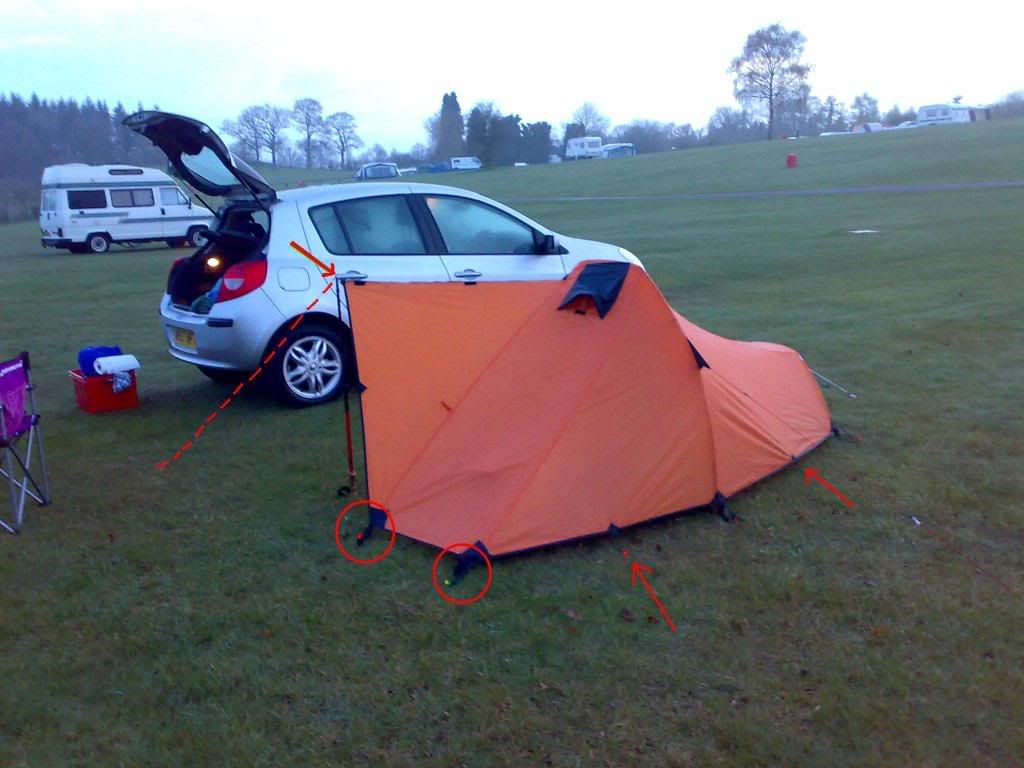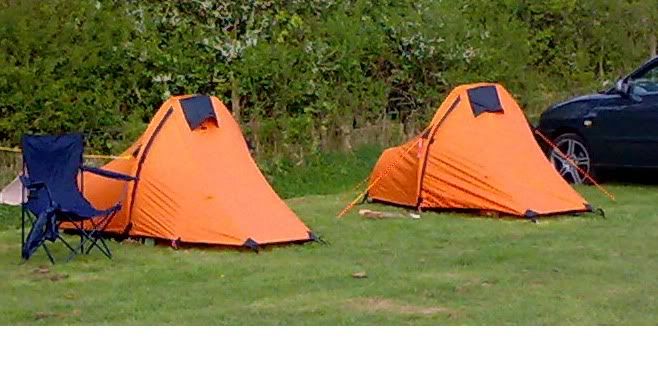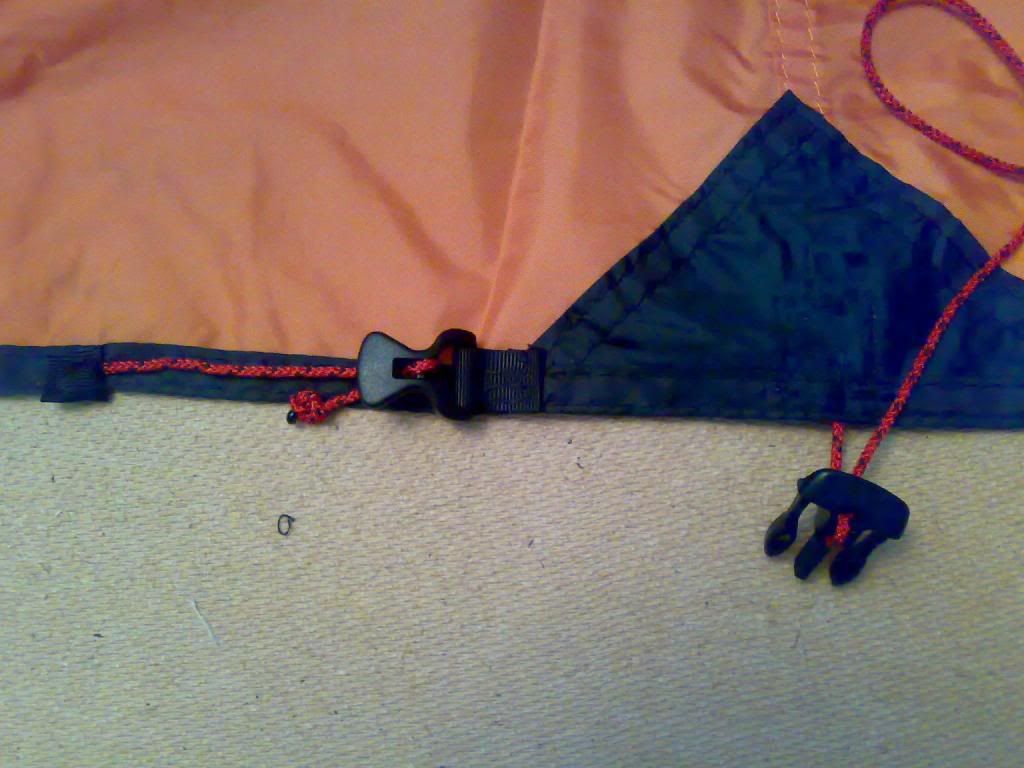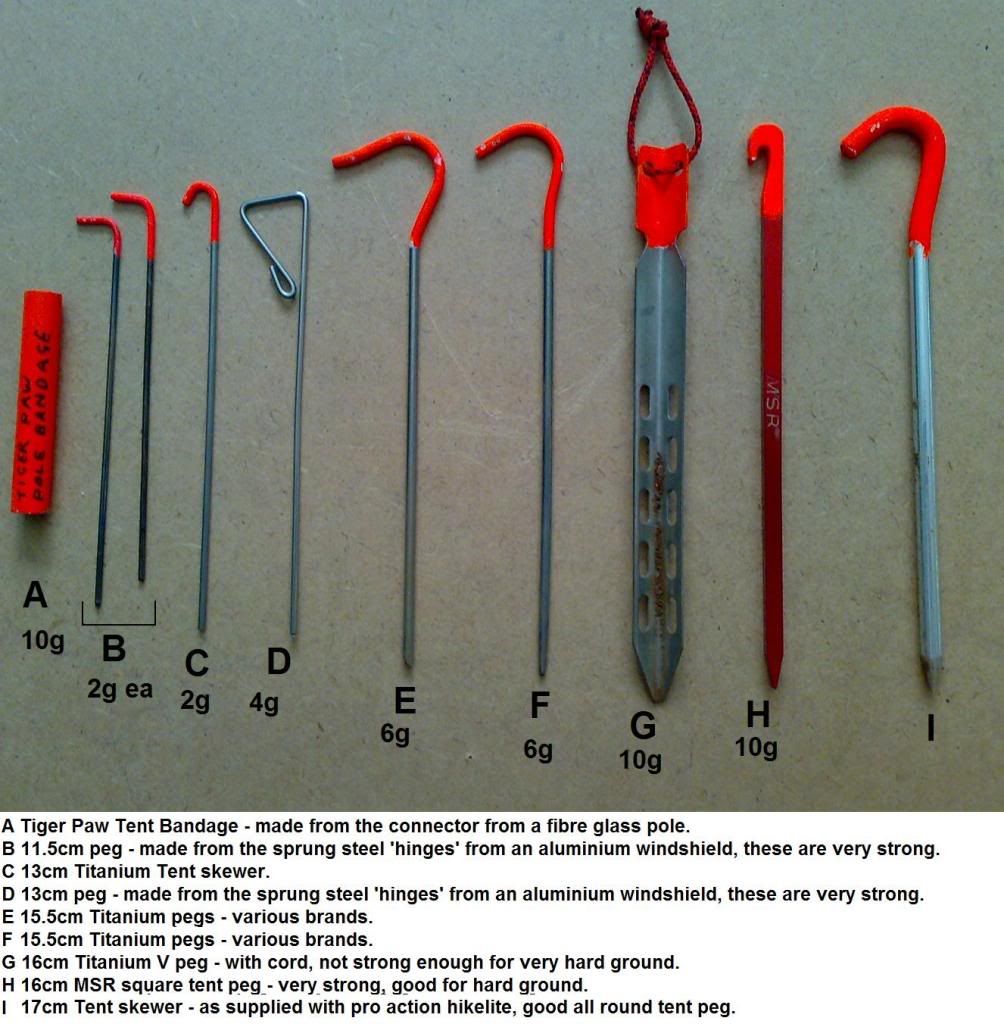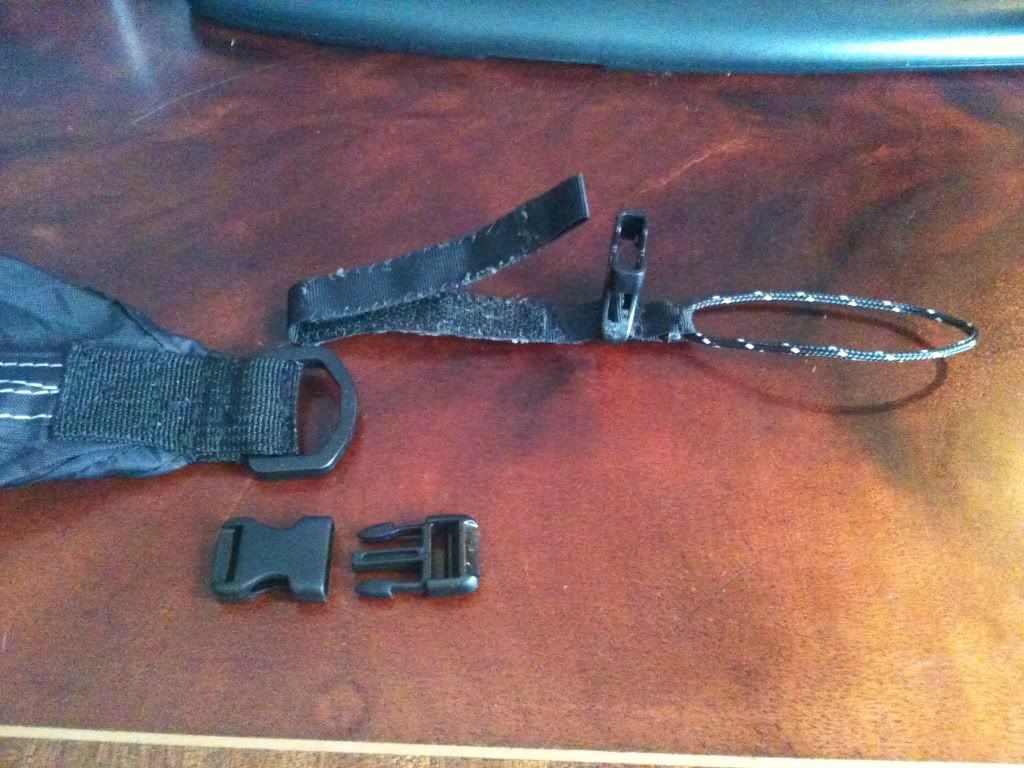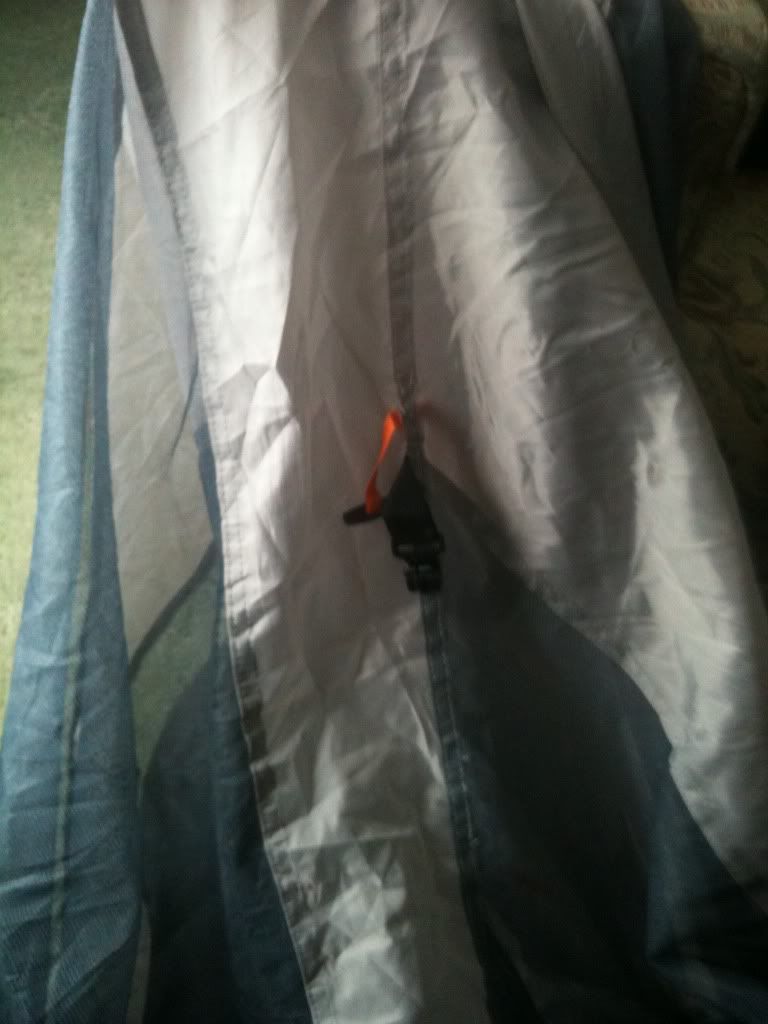Hi DV
The first thing I did was to swap the pegs for titanium ones. The pegs supplied with the tiger paw are actually very good, but are a bit heavy for my liking.
The next easy mod is to remove the lid and compression straps from the tent bag...They don't really do a lot, but do double the bags weight. You could also just use the tent bag as it is, for a fairly lightweight compression bag for a sleeping bag. If you seam seal it thoroughly, it is waterproof.
As I travel lightweight, I also replaced the pole and peg bags with lighter ones, that were a closer fit.
I replaced the tent guy lines with 2mm dyneema. This is not only lighter, but is also stronger. I have no idea how many folks on this site use dyneema, as many still seem to like paracord, which is heavier, bigger to carry, and is not as strong.
I add four extra reinforced pegging points to the tents (using the exact same design as the original reinforcement patches (but sometimes scale them down in size).
The pic below will help.
This pic shows the four extra pegging points. Without these, the tent can be a bit flappy on windy days. These extra points keep the fly really taught, and thus quieter (so easier to sleep in).
The pic also show, that there is a small loop of 2mm dyneema sown the corner of the door. This can be used as a rain shield, or to make a wind break for cooking just outside the tent.
In this instance, the door is help open with a walking pole, and the guy attached to the door is the one that would normally be on that side of the fly ( I put a loop on the end of the guy, and then loop that to the tent, so it is easy to undo...for washing lines, holding the door open or practising knots etc).
The dyneema used for the guys (and other places on the tent) is a reflective. one, so that it is easy to see them in the dark
This pic, that I also posted below, shows the difference in fly tautness of a modified tent on the left, and an unmodified one on the right.
I also replace the large webbing and buckles on some of the tents to make them not only lighter, but also to make their pack size quite a lot smaller (and it really does)
Closest to the camera is the original webbing and buckle, and at the rear is the modified lighter/smaller stuff. It uses 13mm ultralight webbing, and cord lock buckles, as well as 2.5mm cord.
On some tents, i have added a mini cord lock to both front panels, to tension the fly instead of using extra front reinforcement patches
The original pegs supplied are the ones marked 'I' in this pic.
For normal soil I would now use pegs E or F, but if the ground was going to be very soft or very hard I would also take some G or H
On the left of the pic is a pole bandage. I carry one of these with each tent, just in case I snap a pole, or a pole socket breaks. I make them from the female socket end of suitably sized fibreglass tent poles.
I paint all of my pegs in dayglo orange, to avoid losing them, or to stop others trading on them.
A VERY useful mod, is to alter the front left inner pegging point, to allow easy cooking within the tent. This pic shows how the front left peg point can be replaced by either a velcro fitting, or a side release buckle. These make it very easy to unhook the inner, while still INSIDE the tent, and then fold back the front of the inner, to reveal a large cooking area.
To avoid the inner rolling forwards during cooking (or just to stop it annoying you by flapping on your head), I also add a simple loop and tie to either side of the front left of the inner tent.
I often run a length of 2mm dyneema along the inside of the inner roof for drying clothes, and have a small gear loft attached to one of the tiger paws, for torches, glasses, and a radio etc.
As I sleep on my left, I also swap the document pocket from the right side to the left to make it more convenient.
Last but not least, I also add two more ties to the rear of the fly (to attach it to the rear pole), and two more to the front of the fly. I fully seal seal the zip, and every seam on the bathtub floor.
All in all, an average tiger paw of mine will have longer guy lines, five more pegs than standard, a pole bandage, four extra pegging points, an internal washing line, torch hanging loops and a gear loft, and yet still pack a lot smaller than a standard tend, as well as be over 200 grammes lighter.


